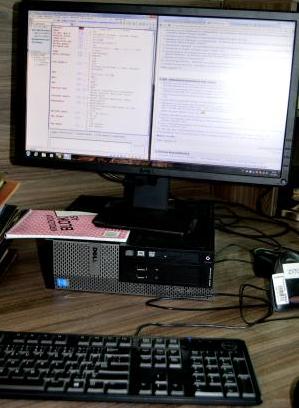Cycle of a book - part 3/5: Processing
Published on 11 May 2015
After the correct selecting books that fall into the “Books Discovered Once Again” project and the preparation stage comes the processing of the books, consisting of several steps. All of this is described in the following article.
Monographs which have undergone the preparation stage are further sorted. A record of a physical unit is created for every book with a complete and correct record in the National Library catalogue, which involves the assignment of a call number, the specification of an individual library, and the determination of the book’s status. Then a bar code is stuck inside, whose value is copied into the data on physical units and added to the given bibliographic record.
Other books are handed over for cataloguing, during which a minimal record is created, containing data on both the names and the subject descriptions. The cataloguing is performed by specially trained cataloguers, newly hired for the project. These records are then checked by the National Library experts, who check both the quality and the quantity of processing. An average daily limit for one cataloguer is sixteen books (taking into account the complexity of the document processed, the possibility of verification or downloading the record in another library, etc.).
Books that have been catalogued then undergo the same procedure as documents for which records of physical units are created directly. Data on physical units also include recorded provenance marks. The full text of the stamp, Ex Libris or ownership labels, if they are legible, and the provenance of all marks that appear in the book, are entered into the “Internal note” field if their texts can fit in this size-limited field. At the same time, a work database in xls format is created containing the following data for every provenance: call number, system number, text, compressed picture, type of provenance mark, and sorting factor (e.g. surname). Currently, the database contains over 400 provenance marks.
All work related to the processing of documents is performed with respect to currently valid processing rules (AACR, RDA) in valid standards (MARC 21) and in compliance with current methodological trends applied worldwide.



